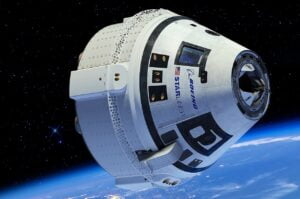ButSpeak.com
News which Matters.

NASA and Boeing work to identify and fix issues with the Starliner spacecraft, leaving the return plans of astronauts Sunita Williams and Butch Wilmore uncertain.
NASA has provided new updates indicating progress in identifying the root cause of the Boeing Starliner’s malfunctioning systems, including failed thrusters and a series of helium leaks experienced during its maiden test flight. Despite these advancements, there remains no clarity on when, or if, astronaut Sunita Williams and her crewmate Butch Wilmore will return to Earth aboard the Boeing Starliner spacecraft.
According to Boeing, the Starliner can remain docked with the International Space Station (ISS) for a maximum of ninety days, after which the onboard batteries may deplete. This gives US space technologists approximately forty days to determine whether Williams and Wilmore will return on the impaired Starliner or if they will need to use alternative spacecraft such as SpaceX’s Crew Dragon or the Russian Soyuz. Both these standby vehicles are already docked at the ISS, ensuring that neither Sunita Williams nor the other eight astronauts are stranded in space.
Steve Stich, NASA’s Commercial Crew Program Manager, noted that the crew is in good spirits and making the most of their time on the station as part of Expedition 71. Given that both Sunita Williams and Butch Wilmore have previously undertaken long-duration missions, they are well-prepared to handle the current situation. Stich added that contingency plans are in place, but the primary focus is on bringing the astronauts back to Earth on the Boeing Starliner.
Mark Nappi, Starliner program manager and vice president of Boeing, expressed confidence in the spacecraft, stating, “I’m very confident we have a good vehicle [in Boeing Starliner] to bring the crew back with.” However, Boeing has faced numerous setbacks during the Starliner’s development. Initially contracted for $4.2 billion, the project has now cost approximately $5.7 billion, with the mission still incomplete. This has also drawn broader scrutiny of Boeing’s operations, with CEO David Calhoun recently questioned by US Senators about the company’s safety culture and transparency.
NASA stated that ground testing of a Reaction Control System (RCS) thruster is complete, and inspections are concluding. The data collected will support future missions and aid in scheduling a landing date for the Starliner Crew Flight Test. Testing at NASA’s White Sands Test Facility in New Mexico continues, including a planned hot-fire test of 27 out of 28 RCS thrusters while the spacecraft is docked to the ISS. This aims to verify thruster performance and assess the stability of helium leaks.
Boeing also announced plans for another docked hot-fire test to verify the spacecraft’s thruster performance and check the status of helium leaks. The first such test took place on June 15, with the upcoming test providing additional verification.
While some glitches were expected during this maiden test flight, the mission’s extension from ten days to an indefinite period has raised significant concerns within the global space community. The ongoing situation underscores the complexities and challenges of space exploration, highlighting the need for robust systems and contingency plans to ensure astronaut safety and mission success.